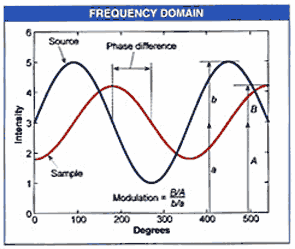Sponsored by HORIBAAug 15 2005
Time is always on your side once your laboratory is equipped with a HORIBA Fluorolog Tau Lifetime Spectrofluorometer. Instantly, Tau delivers the best of both worlds: steady-state and dynamic measurements with just the twist of a knob. You get TRUE picosecond performance for far less expenditure than any other picosecond system.

Figure 1. The HORIBA Tau Lifetime Spectrofluorometer from HORIBA
Key Features of the HORIBA Fluorolog Tau Lifetime Spectrofluorometer
Key features of the HORIBA Fluorolog Tau Spectrofluorometer include:
- Measurements are backed up by over a century of research and experience
- Uses a reference to monitor the modulation of the excitation beam while also measuring the emission, so true differential measurement is performed.
- Produces two observables - phase and modulation - for determining the lifetime.
- Usually faster, easier, and requires less maintenance.
- Can be performed with a source that has a continuous output compatible with steady-state measurements. Therefore, a dual-purpose instrument can be manufactured with the same light source for both.
- The differential measurements cancel out instrument artefacts such as pulse-smearing through monochromators, that limit the usefulness of time-domain measurements.
Only the HORIBA Fluorolog Tau Fluorometer Delivers
The HORIBA Fluorolog Tau Spectrofluorometer delivers:
- Highest sensitivity-even with a xenon source (cw laser optional)
- Flexibility with sources-no expensive pulse lasers are needed
- Flattest frequency response over the full frequency range
- Fast selection of lifetime or steady-state operation
- Upgrades for any FluoroLog-3 to lifetime capability
In the frequency domain, the excitation source has its intensity modulated at a high frequency. As a result, the sample's emission is also modulated, but out of phase with the excitation. Both the phase-difference and the modulation of the emission are directly linked to lifetime.

Figure 2. Frequency Domain
Applications of the HORIBA Fluorolog Tau Spectrofluorometer
Applications of the The HORIBA Fluorolog Tau Spectrofluorometer include:
- Lifetime Heterogeneity
- Distributed Fluorescence Decays
- Anisotropy Decays
- Single and multi-component fluorescence decays
- Resolve picosecond lifetimes
- Deconvolve multiple spectra
- Watch the time-evolution of spectra
- Record time-resolved polarisation spectra
Lifetime Micro-Mapping System
Now, you can study fluorescence dynamics, which are independent of fluorophore concentration, and gain more information about molecular motion, sizes, local environment, interaction, and binding, with the ability to discriminate microscopic locations in your sample. With the power of confocal microscopy, you can get sharp images and determine localised interactions in cells and dynamics of cellular structures. Steady-state spectra of microscopic areas on your sample are a snap, too!

This information has been sourced, reviewed and adapted from materials provided by HORIBA.
For more information on this source, please visit HORIBA.